If you are looking wholesale lighting solutions, click here.
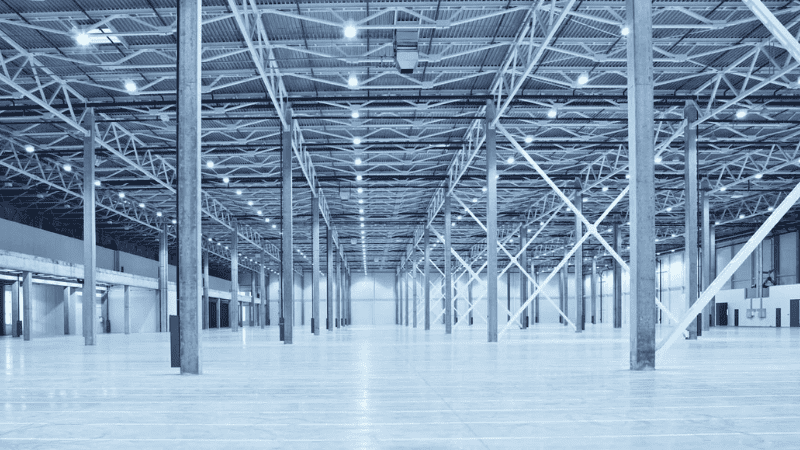
When businesses like warehouses and retail stores light up their spacious areas, the lighting is what impacts the look and feel of their business. Let’s discuss the two main lighting that are required for these types of businesses and see what their real difference lastly why choosing between both could be important for your space.
According to Energy Star, lighting accounts for 17% of total commercial building energy usage in the United States. Therefore, the right lighting decision can improve a space’s aesthetics and significantly impact energy efficiency and cost savings.
High bay and low bay lights are essential components in various settings, each serving a distinct purpose based on ceiling height and area size. This section aims to shed light on their differences, ideal use cases, and the factors that distinguish one from the other.
These lights are built to support large areas with high ceilings (generally above 20 feet). These lights are perfect for use when providing light to broad areas like warehouses, commercial spaces, and factories.
Their unique design, which often includes reflectors or lenses, ensures they can cast light over a long distance without losing intensity. What sets them apart is their unique design that can handle the technical demands of ceiling height by focusing light more directly to ensure it reaches the floor evenly.
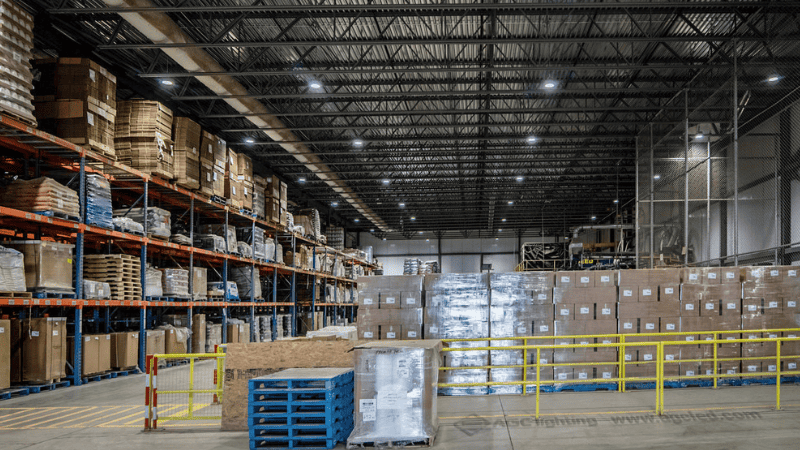
Perfect for more compact spaces, these fixtures are just the ticket when dealing with ceilings that are 20 feet high or less. These fixtures produce a more diffused and softer light distribution, suitable for smaller, more confined spaces such as retail stores, workshops, and garages.
Given the closer proximity to the floor, low-bay fixtures are designed to spread light more evenly and reduce glare, ensuring a comfortable lighting environment. This quality makes them the optimal choice for spaces where precise tasks are performed, requiring clear visibility and less harsh lighting.
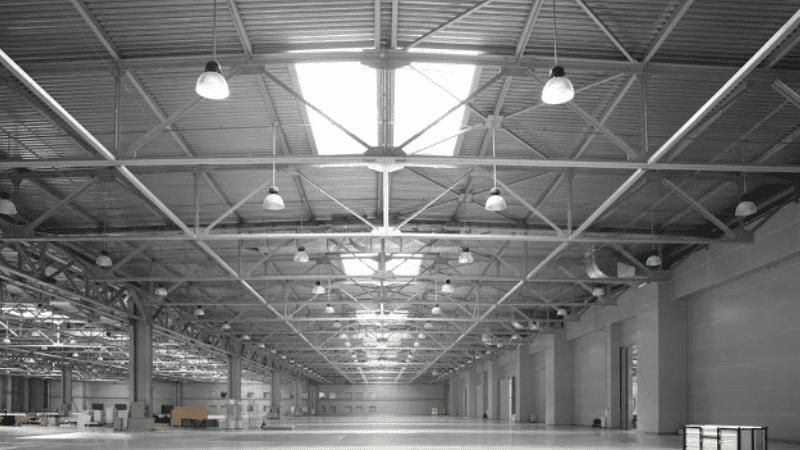
Both of these fixtures are uniquely designed to provide optimal illumination and reduce energy costs in their use cases. Understanding these differences will allow us to make an informed decision when choosing between these two lighting fixtures.
You cannot install these lights on regular positions and that’s one of the main differences.
High bay lights give the best results when installed with ceiling heights over 20 feet. Their intense, focused lighting is designed to reach far distances without losing brightness, ensuring every corner of the large space is well-lit.
Similarly, low bay lights give you a softer and more diffused light distribution which is best for spaces with lower ceilings. Their design emphasizes creating a softer, more diffused light distribution that evenly covers a smaller area. This reduces glare and makes the lighting comfortable for tasks closer to the light source.
Therefore, when choosing between these two types, the height of the installation space becomes the primary deciding factor.
It’s another clear difference between high-bay and low-bay lights.
High bay lights, which aim to illuminate large and towering spaces, have a higher lumen output. This high-intensity lighting ensures that the light can reach the farthest corners and illuminate the entire space effectively, even from a significant height.
However, the intense lumen output isn’t necessary for low bay fixtures as they focus on providing a softer, more evenly distributed light.
This results in a less intense but evenly distributed light, perfect for smaller areas where tasks demanding visual precision are performed. This softer light intensity reduces glare and eye strain, making the lighting comfortable and enhancing visibility for detailed tasks.
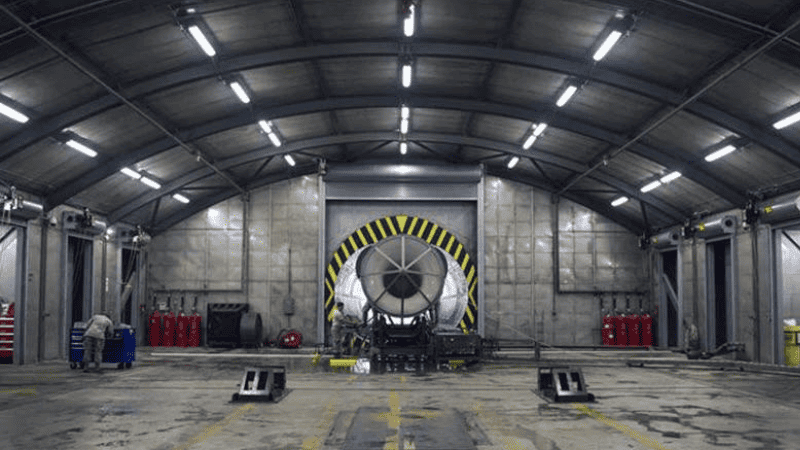
Effective light distribution is a fundamental factor that distinguishes high bay lights from low bay lights.
Due to their placement at a greater height, high bay lights require a narrow beam angle for effective light distribution. This narrow beam focuses the light downwards, reaching the floor from significant heights and providing uniform illumination throughout the space.
The focused distribution design ensures that light loss is minimized and brightness is maintained. At the same time, low bay lights have a wide beam angle for light distribution owing to their lower installation height. This allows the light to be spread over a broader area, ensuring even illumination across the entire space.
The wider light distribution prevents the creation of harsh shadows and reduces glare, making the lighting less intense and more comfortable for those occupying the space.
This quality is essential in smaller areas where detailed tasks are undertaken, requiring clear visibility and a comfortable lighting environment.
Both high-bay and low-bay lights have significant energy efficiency, particularly when equipped with LED technology.
High bay lights, designed for large spaces, typically consume more energy due to the greater lumen output needed to illuminate vast areas effectively. However, they can still offer substantial energy savings by leveraging LED technology.
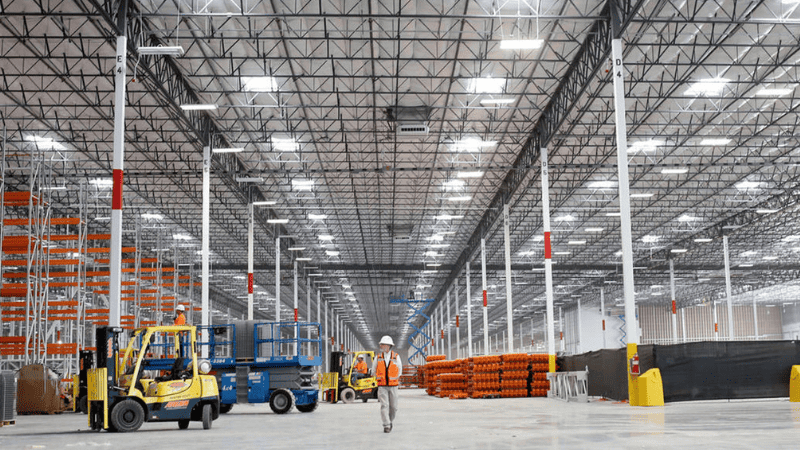
On the other hand, low bay lights are generally less power-hungry due to their application in smaller areas.
The LED versions of low bay lights are especially efficient, consuming less power and offering extended lifespan, thereby reducing maintenance costs.
Furthermore, their design enhances these lights’ energy efficiency, ensuring optimal light distribution and minimizing light loss.
The wattage and lumens of these lighting fixtures are crucial in determining their brightness and energy consumption.
High bay lights, designed for large spaces, often require higher wattages due to their need for more significant lumen output. They typically range from 100W to 500W and can produce an impressive lumen output of 10,000 to 50,000 lumens.
This high-lumen output is essential for these fixtures to illuminate large areas from considerable heights effectively. However, low bay lights operate at lower wattages, usually 50W to 200W, with a lumen output of 5,000 to 20,000 lumens.
This is sufficient for evenly distributed, soft light across smaller areas. This lower wattage and lumen output result in less energy consumption, making low bay lights an energy-efficient choice for smaller spaces.
Selecting the appropriate high or low bay fixtures can be a pivotal decision in effectively illuminating your space.
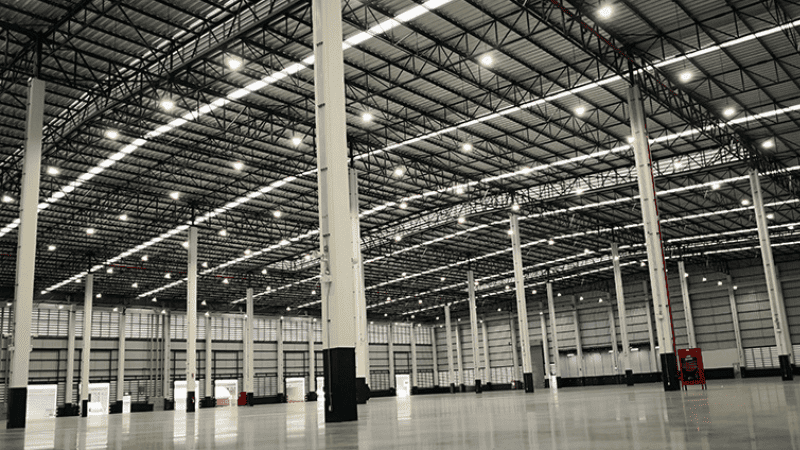
The beam width refers to the angle at which the light is dispersed from the source. In the context of high and low bay lights, this directly influences the coverage area and light intensity in a particular space.
The installation height will guide your decision when selecting the appropriate beam angle.
Typically, high bay lights offer beam angles of 60°, 90°, or 120°. However, with a beam angle of 30° or 45°, low-bay fixtures provide more concentrated light distribution.
For example, if you have a high ceiling with an installation height of over 20 feet, a light fixture with a wider beam angle would ensure adequate light distribution.
However, if you want to calculate the diameter of the light beam, use the following formula:
Diameter = beam angle x 0.0.18 x distance from the bulb.
Color temperature is a measure of the color appearance of light, expressed in Kelvin (K), indicating whether it produces warm or cool tones. Choosing the right color temperature can enhance the overall ambiance of your space and significantly impact mood and productivity.
High bay lights typically have a color temperature of 5000K, producing bright and cool white light suitable for industrial settings. Low bay lights often have a lower color temperature of around 4000K, providing warmer light more suited for commercial spaces.
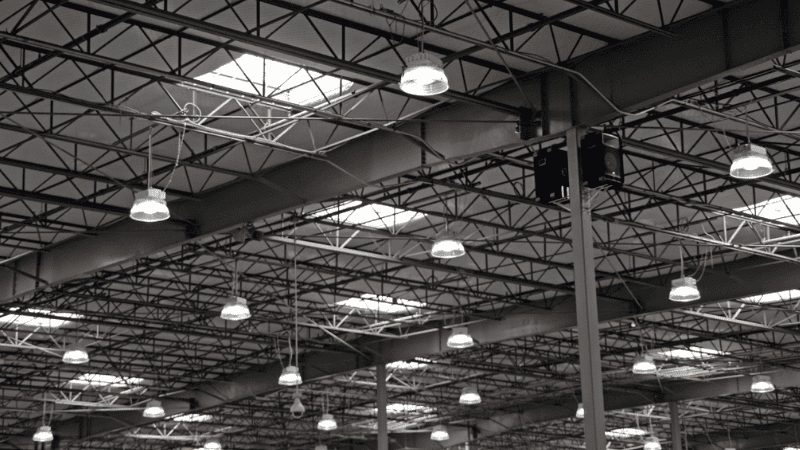
Choosing between both lighting options for your space can be tough, so let’s see a few factors that should be considered before making a decision.
For businesses having a large industrial facility with high ceilings that require bright lighting, high bay lights would be the nicer option. Likewise, if you have smaller areas without large ceilings, that need balanced lighting, go for low bay lights.
Consider the lighting distribution you need for your space and choose a mounting option that best suits your requirements. For example, if you have high ceilings but require focused lighting for specific workstations or areas, consider using directional wall-mounted fixtures to ensure targeted illumination.
Most LED bay lights come with retrofitting kits that allow you to convert your existing fixtures into efficient LED lights without replacing the entire fixture. Retrofitting can be cost-effective if you already have high or low-bay lights but want to upgrade to energy-efficient LED technology.
Using retrofit kits also allows you to customize your lighting solution by choosing the desired wattage, lumen output, and color temperature for optimal performance in your space.
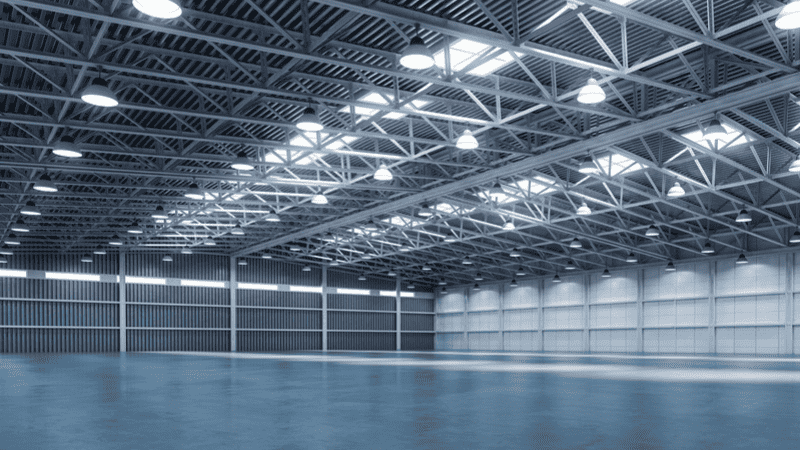
High bay lights generally have a higher initial cost due to their high wattage and light output, but they offer better efficiency in larger spaces, leading to long-term savings.
Low bay lights have a lower upfront cost, but the maintenance costs may be higher due to their lower wattage and light output, requiring more frequent bulb replacements.
LED light holds a significant edge over conventional lighting options when it comes to bay lighting, and here’s why.
First up, LEDs pack a punch with their super-superior energy efficiency. Their knack for converting a whopping 90% of energy into light (as opposed to heat) is a game-changer regarding energy usage and cost. This radical efficiency translates into lower electricity bills and a notable reduction in carbon footprint, painting a greener future for all.
Next up, the sheer longevity of LED lights is truly in a league of its own. Outlasting their traditional counterparts by a staggering margin, some LED lights can shine bright for up to 50,000 hours, reducing the frequency of replacements.
This makes them an absolute favorite for high-bay settings where changing a bulb can be quite easy. You save time and money in maintenance costs while ensuring an uninterrupted lighting experience.
Let’s not forget the versatility that LEDs bring to the table. With an impressive color range, adjustable brightness levels, and flicker-free operation, LEDs offer superior light quality and customization options.
LED lights deliver optimal performance in diverse settings, whether creating a warm ambiance or a brightly lit workspace. The best part? They’re eco-friendly, too, producing less heat and containing no toxic elements.
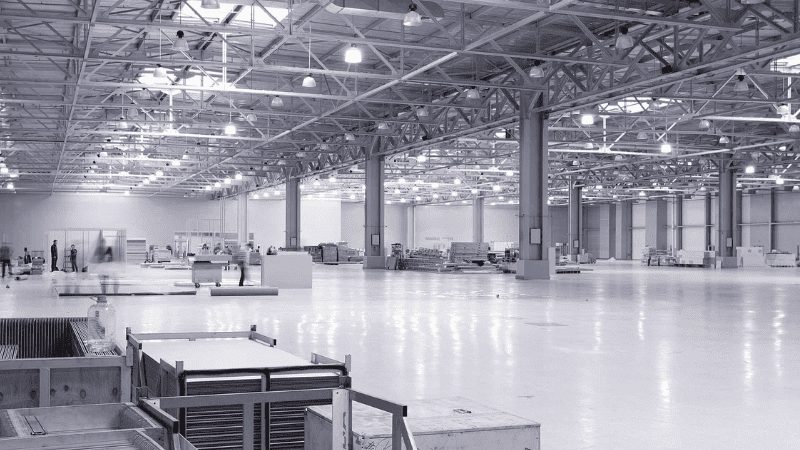
Choosing between high-bay or low-bay LED lights depends on your needs. High ceilings require high-bay lights like manufacturing facilities and warehouses. For smaller spaces or lower ceilings, low-bay lights are a better option
High bay lights offer top advantages like effective light distribution, and eliminating dark spots. They Enhance the visibility. High bay lights are highly energy-efficient, leading to substantial cost savings.
High bay lights are best used for different industrial and commercial applications, including warehouses, gymnasiums, Factories, and retail spaces. They are also commonly used in outdoor settings such as parking lots and stadiums.
The number of high bay light fixtures depends on the size and layout of your space. Generally, you should have one light for every 25-30 square feet of floor area for optimal illumination.
High bay LED lights are remarkably durable, with many products boasting a lifespan of up to 50,000 hours or more. That translates to more than 11 years of continuous operation, ensuring a well-lit, productive workspace without frequent bulb replacement.
Choosing the right lighting solution for your space is crucial for optimal illumination, productivity, and cost-efficiency. High and low-bay LED lights offer a range of benefits, including energy efficiency, versatility, and longevity.
You can make an informed decision between both by considering factors such as space requirements, mounting options, and retrofitting possibilities.
At Risun, we have a full range of commercial lighting solutions for different types of businesses. From high bay to low bay, ceiling-mounted to wall-mounted fixtures, we have various options for your business.
Our experts at Risun can also help you find the right lighting solution for your space and guide you through the entire process, from selection to installation. Contact us today to learn more about our LED bay lights and how we can assist with your lighting needs.
Comprehensive Lighting Solutions for MRO Wholesalers and Professionals
send your inquiry
Hi, I'm the author of this post, and I have been in this field for more than 15 years. If you want to wholesale lighting fixtures or lighting related product, feel free to ask me any questions.
Learn More >>Download our catalog to view all of our lighting products.
Ready to get started ?
Send Your InquiryOur team will get back to you promptly

please
download
Get notified about new products
Our team will get back to you promptly!
Add your first comment to this post